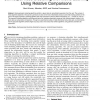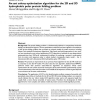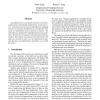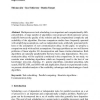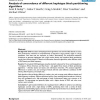JCB
2007
14 years 5 months ago
2007
Accurate prediction of pseudoknotted nucleic acid secondary structure is an important computational challenge. Prediction algorithms based on dynamic programming aim to find a st...
BMCBI
2005
14 years 5 months ago
2005
Background: Detection of sequence homologues represents a challenging task that is important for the discovery of protein families and the reliable application of automatic annota...
TKDE
2008
14 years 5 months ago
2008
Semisupervised clustering algorithms partition a given data set using limited supervision from the user. The success of these algorithms depends on the type of supervision and also...
BMCBI
2005
14 years 5 months ago
2005
Background: The protein folding problem is a fundamental problems in computational molecular biology and biochemical physics. Various optimisation methods have been applied to for...
TJS
2008
14 years 5 months ago
2008
A parallel file may be physically stored on several independent disks and logically partitioned by several processors. This paper presents general algorithms for mapping between t...
TJS
2008
14 years 5 months ago
2008
Abstract Multiprocessor task scheduling is an important and computationally difficult problem. A large number of algorithms were proposed which represent various tradeoffs between ...
BMCBI
2005
14 years 5 months ago
2005
Background: The use of mass spectrometry as a proteomics tool is poised to revolutionize early disease diagnosis and biomarker identification. Unfortunately, before standard super...
JAR
2007
14 years 5 months ago
2007
Abstract. In this paper we study the diagnosis and repair of incoherent terminologies. We define a number of new non-standard reasoning services to explain incoherence through pin...
BMCBI
2005
14 years 5 months ago
2005
Background: Different classes of haplotype block algorithms exist and the ideal dataset to assess their performance would be to comprehensively re-sequence a large genomic region ...
BMCBI
2005
14 years 5 months ago
2005
Background: Pairwise stochastic context-free grammars (Pair SCFGs) are powerful tools for evolutionary analysis of RNA, including simultaneous RNA sequence alignment and secondary...

